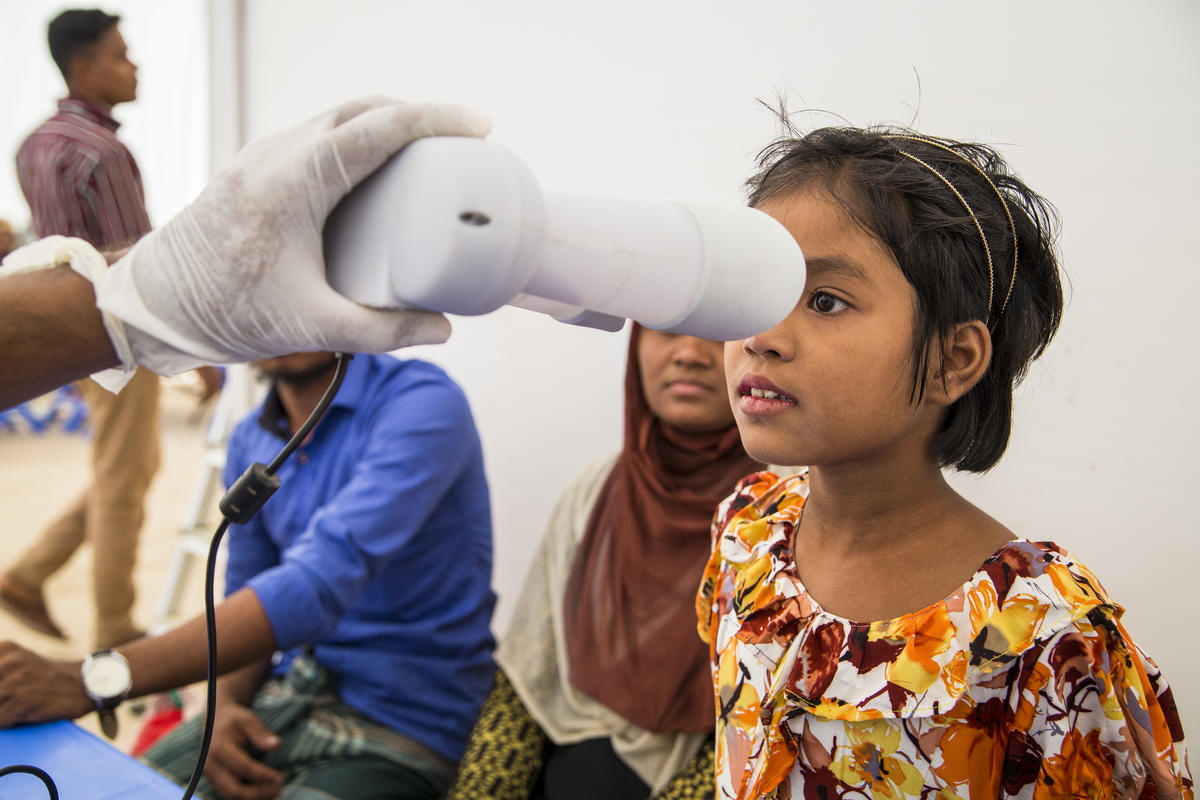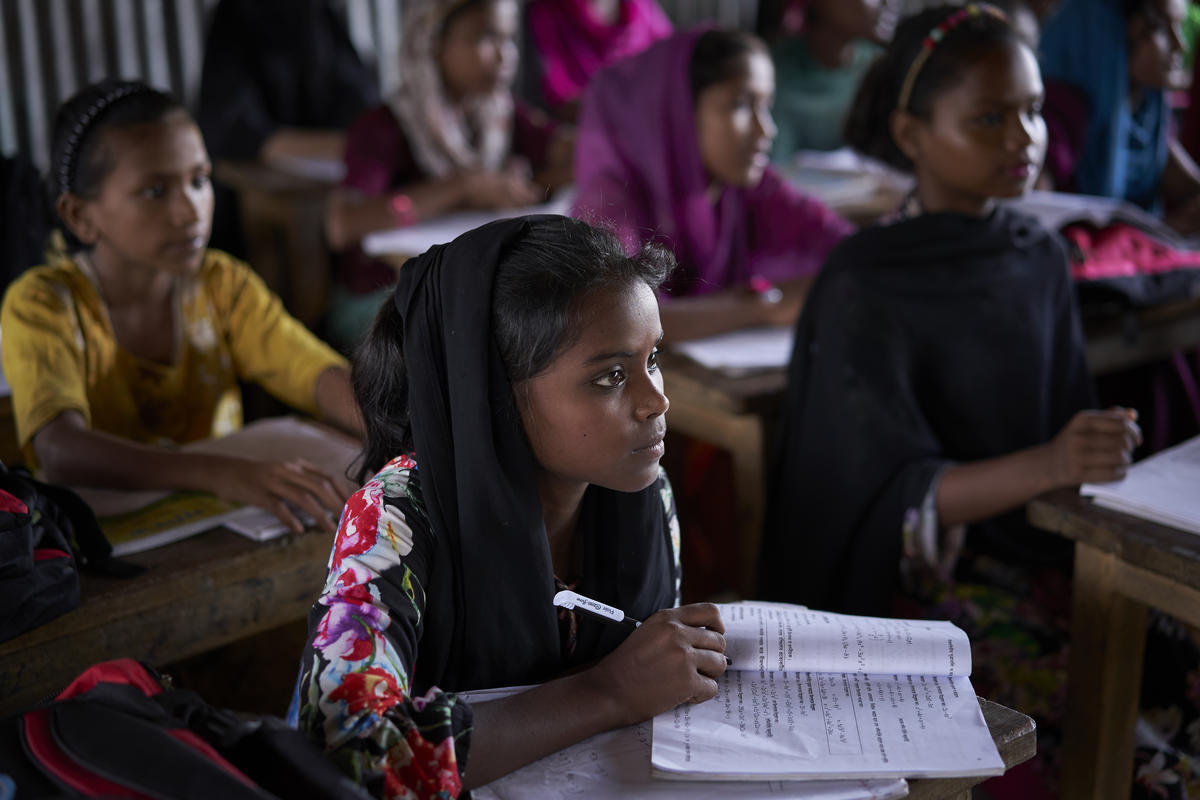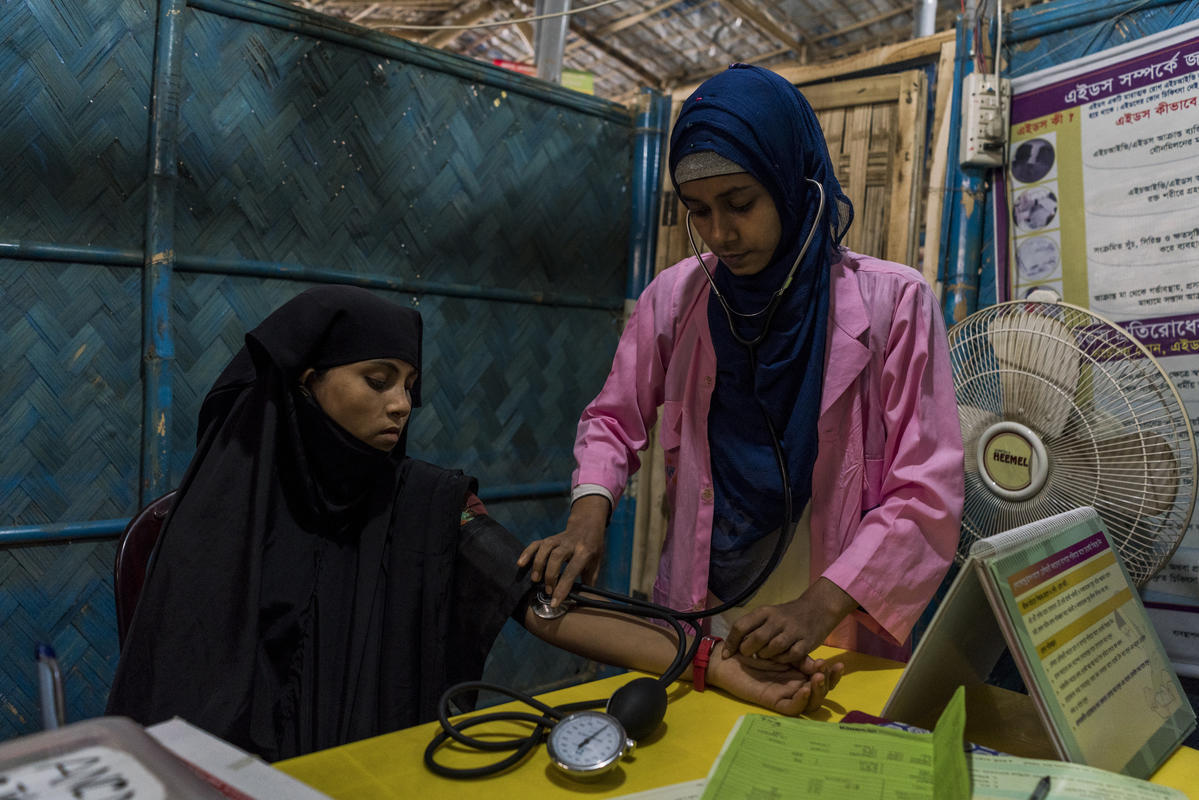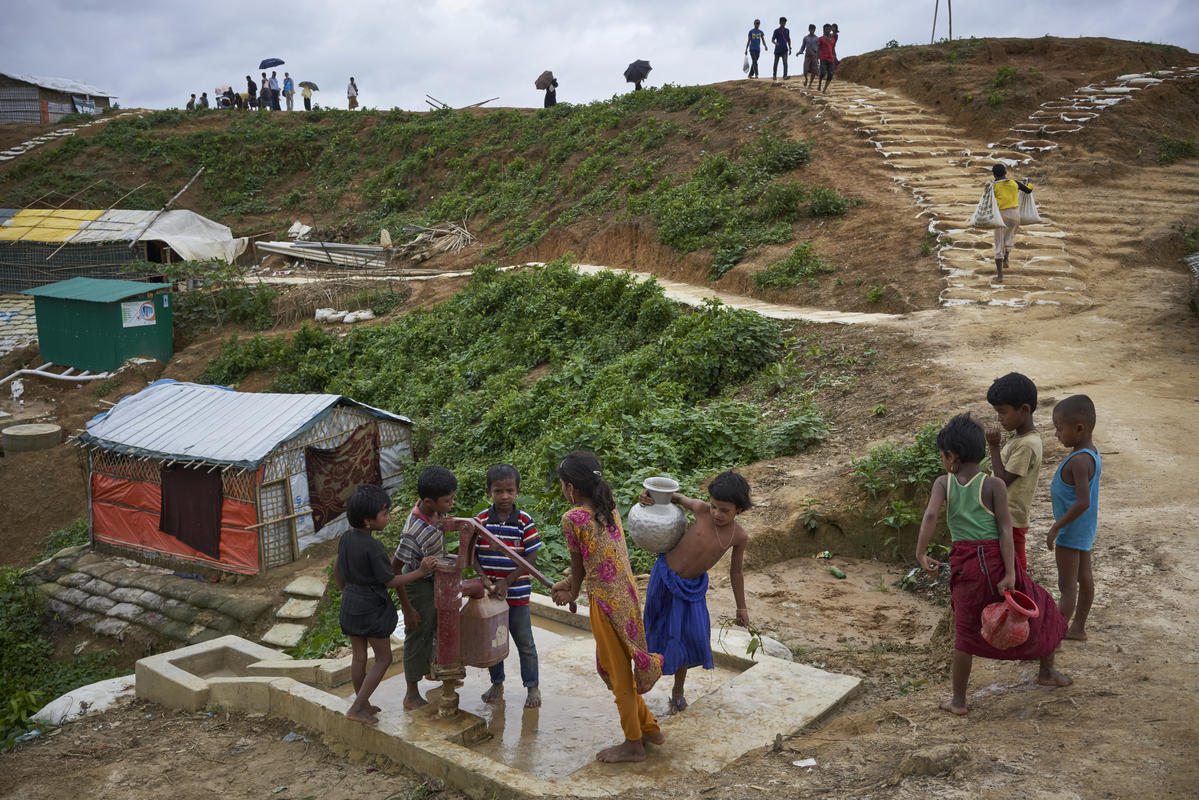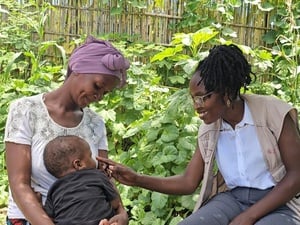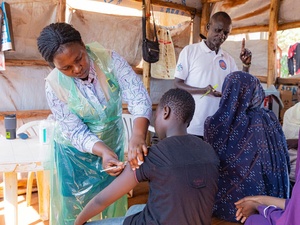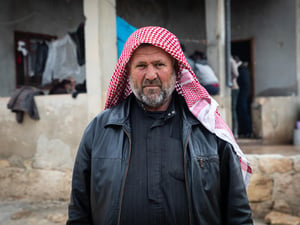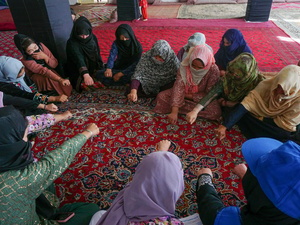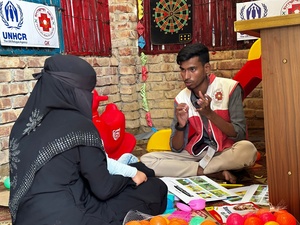Helping families to thrive at the world's largest refugee settlement
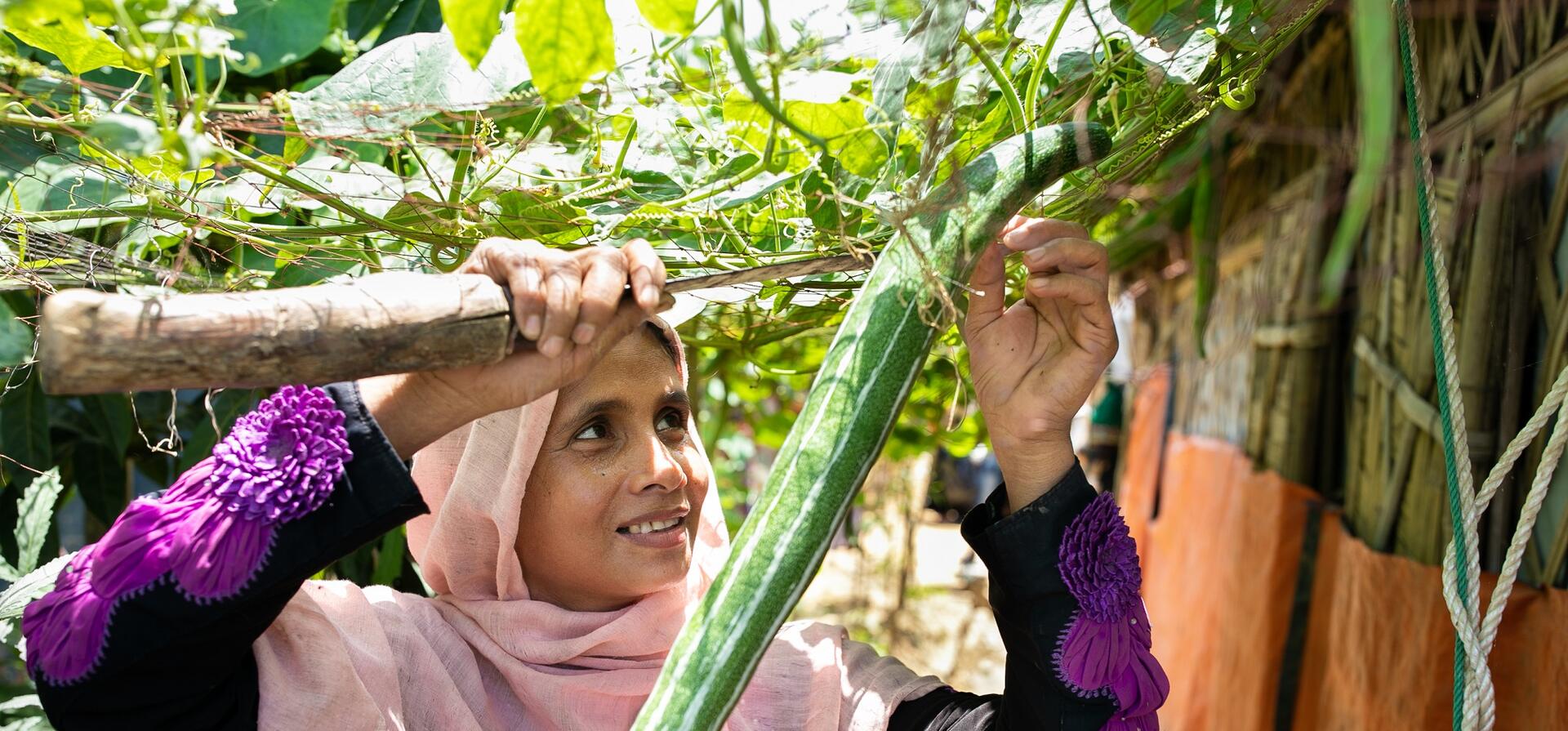
Helping families to thrive at the world's largest refugee settlement
Rohingya refugee Sahera smiles as she sees green sprouts emerging from the soil in her garden in Kutupalong in south-east Bangladesh. For her, it is more than just the promise of fresh food for her three children. It is a reminder of home.
Through a unique project created by UNHCR, the UN Refugee Agency, and its partner BRAC, women like Sahera are able to plant and harvest their own produce again. The project began in 2018 with 100 farmers and is expanding.
Sahera’s garden includes spinach, gourd and pumpkin – a particular favorite of her youngest daughter, Fatema. The family’s harvest has been so bountiful that they cannot use it all within their small household.
“Not only do we have vegetables for ourselves, we often share them with our neighbours,” she says. “If we have leftover produce, we sell it to nearby shops.”
“Not only do we have vegetables for ourselves, we often share them with our neighbours.”
The farming project is among many programmes currently in hand to improve the lives of refugees in Kutupalong, which is home to more than 630,000 Rohingya refugees like Sahera and Fatema. A total of over 900,000 Rohingya refugees are hosted in settlements across the region. Most of them, an estimated 740,000, fled violence that erupted in August 2017 in Myanmar.
In the two years since large numbers arrived under lashing monsoon rains, UNHCR and its partners have shifted gear from providing immediate life-saving aid including shelters, water and sanitation facilities and access to medical care, to a wider response with refugees at its core.
“The first year, we focused on saving lives – making sure we provided the basic services and materials that were needed for families to survive the monsoon period, but also trying to recover from the perils of their journey,” says Oscar Sanchez Pineiro, UNHCR’s Senior Field and Sector Coordinator in Cox’s Bazar.
“Now, in the second year, we’re focusing more on building capacity for refugees to do a lot of these things on their own. We’re putting refugees at the centre of the response, to deliver services, upgrade shelters and improve infrastructure.”
As well as providing fresh, healthy food, one of the project’s main goals has been to reduce the effects of deforestation and erosion in this area of south-east Bangladesh, which has accelerated with so many families living in a compact area.
Rohingya refugees are also taking up key roles in other vital activities including a push to provide medical care to refugees, offering a gamut of services ranging from nutrition, to perinatal care and mental health.
"We’re putting refugees at the centre of the response, to deliver services ... and improve infrastructure.”
Jubaida Khtun volunteers as a Community Health Worker with Gonoshastho Kendra, a Bangladeshi organization that partners with UNHCR in the health sector. She goes from shelter to shelter in the huge settlements – which cover an area of 13 square kilometers – to raise awareness of available services.
“We gather groups of women to discuss health issues,” she explains. “We ask how they are feeling, if they are feeling bad we advise on what they should be doing about this.”
The outreach workers discuss immediate healthcare needs and also ongoing issues that refugees have with mental health and wellbeing, frequently stemming from the violence and persecution that the stateless minority fled in Myanmar.
“We have come from (Myanmar) because we were suffering. I help them in their distress so that they can be happy … It is why I love to help them,” she said.
UNHCR is also working to register all of the refugees. So far more than 500,000 Rohingya refugees from Myanmar have been registered in a joint exercise by the Bangladesh authorities and the UN Refugee Agency.
The registration cards state clearly that Myanmar is their country of origin. They strengthen protection for the refugees in Bangladesh, as well as helping to establish their right to return, if and when they decide the conditions are right. The registration also ensures accurate and targeted delivery of aid and services to refugees.
Other projects underway also support the Bangladeshi host communities in the area. They include making repairs to public buildings, improving access to medical treatment to local families, and even providing materials to help those with the least resources to weatherproof their homes against the monsoon season that soaks the area from May through October.
“When my child grows up. I pray and hope that he has the opportunity to receive education.”
While huge strides have been made to support and improve the lives of refugees and their hosts, challenges remain. At the end of July, UNHCR and its partners working on the joint refugee response in Bangladesh have received US$318 million, just over a third of the total US$920 million needed in 2019.
Key to the future is education for Rohingya refugees, more than half of whom – 55 per cent – are under the age of 18, with 41 per cent aged 10 or under. Some 36 per cent of Rohingya children between the ages of three and 14 remain without access to primary education, while more than 96 per cent of Rohingya refugees between 15 and 24 years old are not participating in any learning activities. Even for those who get to study, there is no recognized curriculum
Together with partners UNHCR has helped construct, staff and manage 426 classrooms, 58 adolescent clubs and 1,204 community-based Early Childhood Development Centres. Additionally, over the last two years, UNHCR has recruited 1,257 teachers from both the Rohingya community and surrounding towns in southeastern Bangladesh. Education remains a huge concern for many parents.
“When my child grows up,” says Hamida Begum, a mother with young a son. “I pray and hope that he has the opportunity to receive education.”


